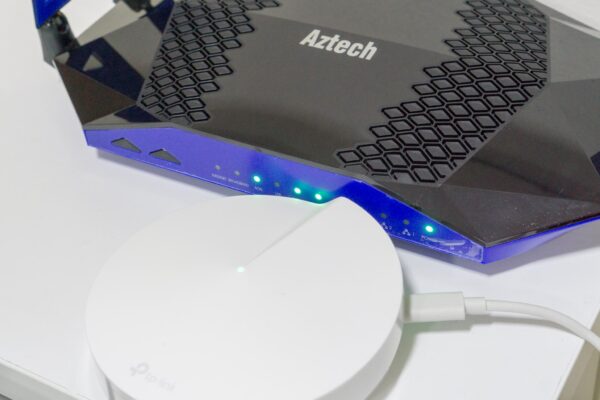
I promised a head-to-head performance comparison between the TP-Link Deco M5 and Aztech AIR-706P, and so here it is. I was holding out a while for a third contender to come in, but alas it didn’t make it in time and I didn’t want to wait too long to publish this comparison of two Mesh Wi-Fi systems new to the market.
Please do read my product reviews of the TP-Link Deco M5 and Aztech AIR-706P first, as I won’t go into their individual details here. This post is primarily about their performance. The TP-Link Deco M5 comes with 3 nodes, but I only have two units of the Aztech AIR-706P. I will make a note of the different number configurations in my tests.
Unfortunately, I don’t have the new Google WiFi either, but I have a TP-Link AP500 and MikroTik hAP ac to compare with, both being standalone, non-mesh routers. Technically the MikroTik hAP ac could be configured as a mesh system, but I just have one unit of it, so it’ll be used as a standalone router.
My test environment is depicted in the diagram below. The switch is a TP-Link TL-SG108E. Bandwidth performance are performed with iPerf. There is a wired iPerf server connected to the switch, and the test client is a MacBook Pro. iPerf is chosen as the bandwidth testing tool as it’s popularly used by others for network testing. I test only the 5 GHz radio.
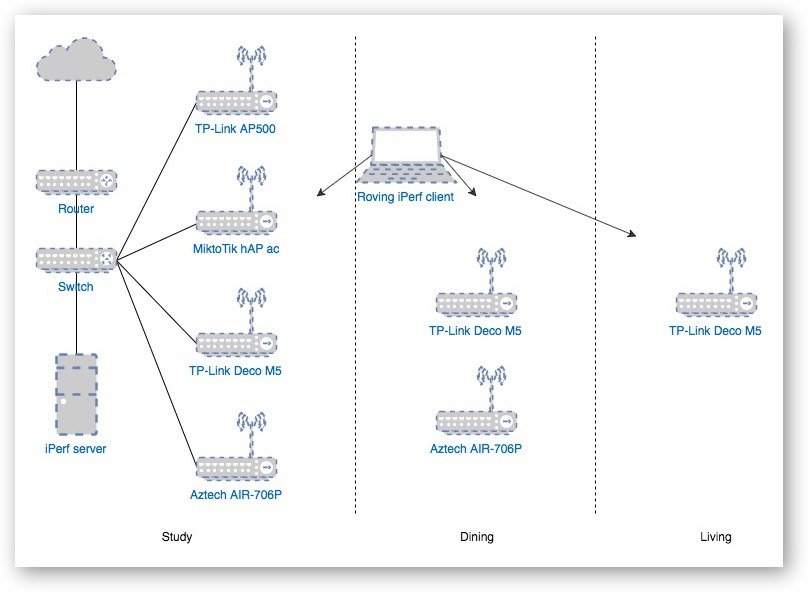
A baseline test is performed with the MacBook Pro connected via a wired Gigabit Ethernet connection to the switch, and the iPerf bandwidth test produced 832 Mbps throughput. My iPerf tests are repeated at least five times, and I use the average for reporting.
For the wireless tests, my three test locations are:
- In the study, with the MacBook Pro approximately 1.5 metres away from the APs.
- In the dining, the MacBook Pro is about 30 cm away from the Deco M5 and AIR-760P, which are about 8 metres away from the APs in the study, with direct line of sight.
- In the living, the MacBook Pro is about 2 metres away from the Deco M5, which is about 8 mtres away from the one in the dining, no direct line of sight.
The first chart I have is of RSSI signal strength seen by the MacBook Pro from the various test positions.
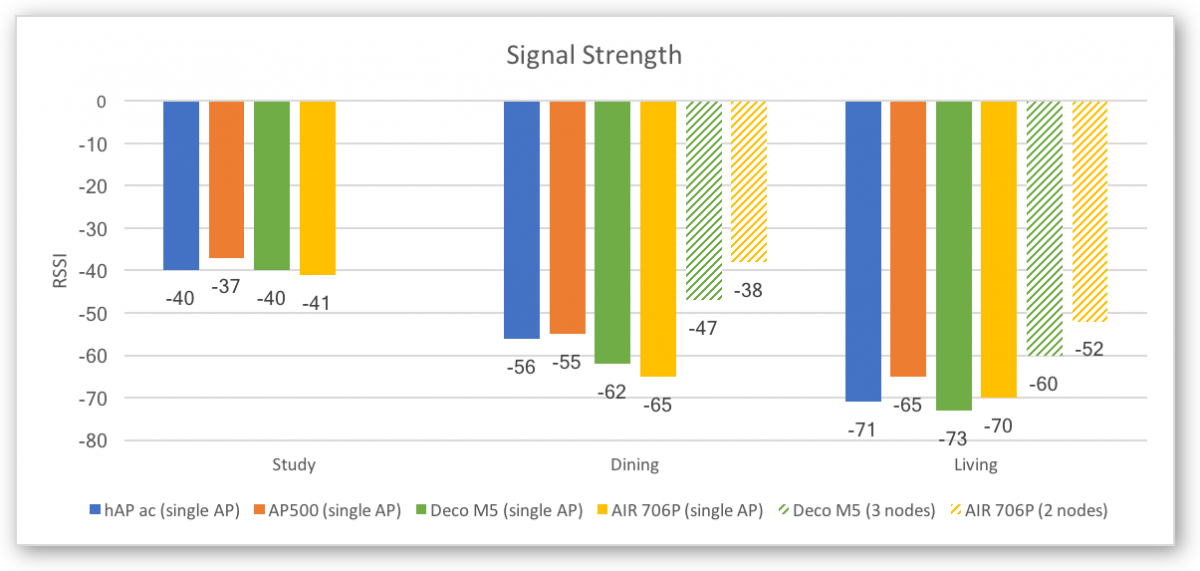
Shorter bars are better (i.e. the less negative the RSSI, the stronger the signal is). In the dining and living room locations, there are extra sets of data for the Deco M5 and AIR-706P, with values for both single device operation (located in the study room) as well as with additional mesh nodes. In the living room test, the Deco M5 has a mesh node there, but the AIR-706P does not.
As you might expect, signal strength moving away from the study gets weaker. For the Deco M5 and AIR-760P, you can see that adding a mesh node in the dining significantly improved signal strength, as opposed to using just a single one of their respective devices.
In standalone AP tests, the TP-Link AP500 has the best signal signal strength, its external antennas clearly giving it advantage over the MikroTik hAP ac and TP-Link Deco M5. Oddly, the Aztech AIR-706P’s external antennas doesn’t outperform the MikroTik hAP ac’s.
The Aztech AIR-706P offered better signal strength at the away locations. It’s probably reflective of the advantage offered by the AIR-706P’s external antennas.
While good signal strength is desirable, ultimately we are also interested in throughput through the Wi-Fi network.
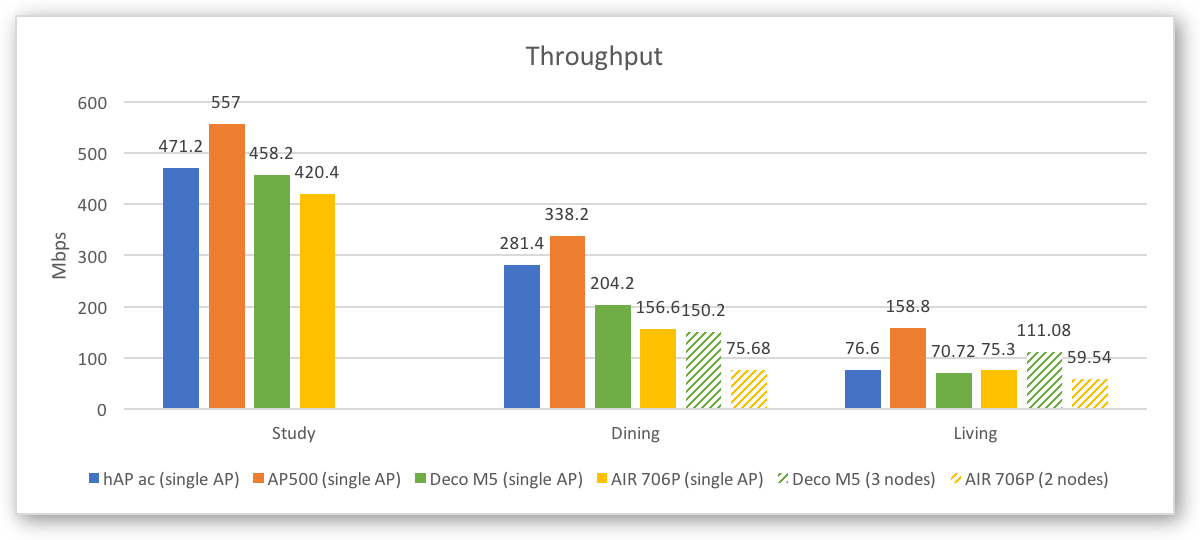
In this graph, taller bars are better. Again, as you’d expect, we get the highest throughput in the study, and moving away gets progressively worse throughput.
Quite interestingly though, notice that the TP-Link AP500 on its own supported the best throughput amongst all test devices at any location, even up against the Deco M5 and AIR-706P operating in mesh mode. Despite losing out to the additional Deco M5 and AIR-706P nodes in signal strength, it was somehow able to achieve superior throughput in the iPerf tests.
Notice in the dining room, how the performance of both the Deco M5 and AIR-706P differ when operating standalone, versus with a second mesh node in operation. My MacBook Pro, in both cases, achieved better performance with a single Deco M5 or a single AIR-706P, then with a second Deco M5 or second AIR-706P operating in the dining room. These figures show that both mesh systems don’t have a dedicated Wi-Fi mesh backhaul to communicate between the mesh nodes. The same radio that communicates with Wi-Fi devices also communicates with other mesh nodes.
The above is similar to how most Wi-Fi range extenders work as they, too, seldom feature a dedicated radio for backhaul communication to the primary Wi-Fi network. Wi-Fi Mesh systems, however, still offer the benefit of single Wi-Fi SSID presented throughout the network.
Although not reflected in the charts above, the throughput of the TP-Link Deco M5 was somewhat erratic. I observed wild swings in throughput figures between repeated tests of the Deco M5. The AIR-706P was far more consistent in this respect.
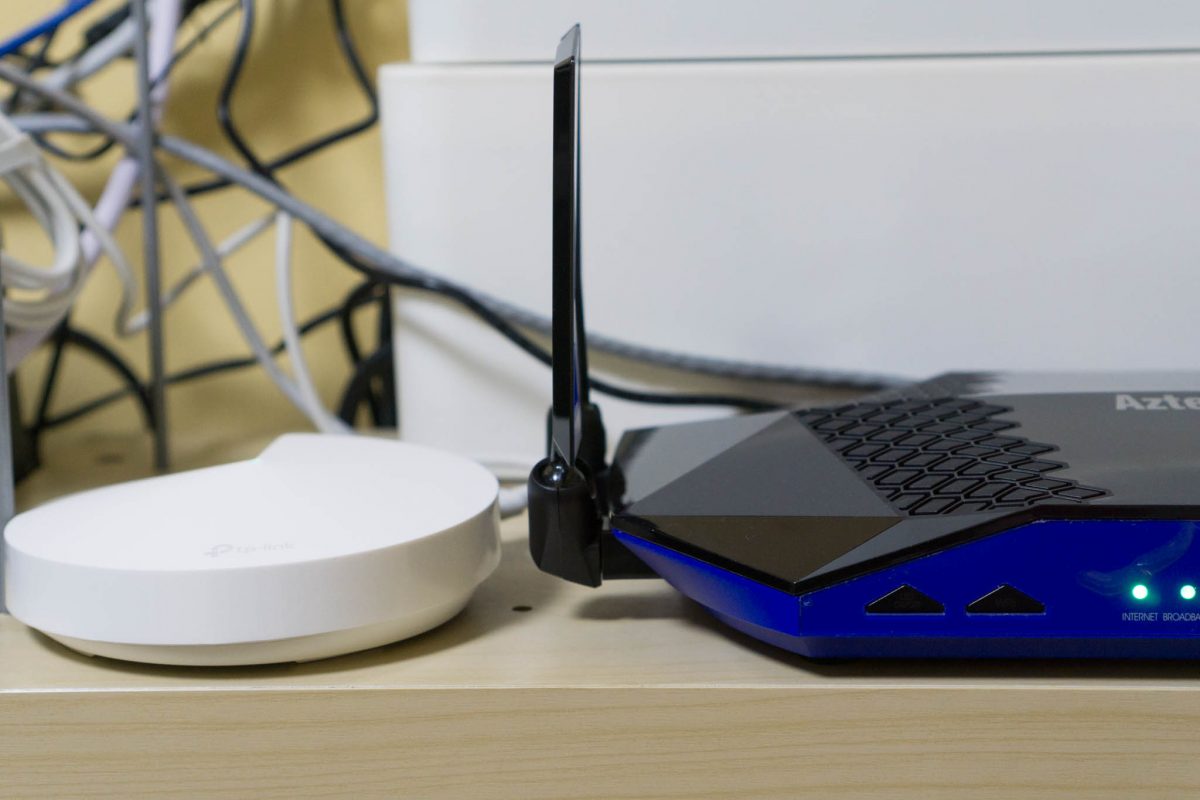
Conclusion
While it’s clear that mesh nodes provide better signal coverage, particularly if your home is plagued with some dead spots, they don’t automatically translate to better data throughput. For homes that aren’t all that large, it’s likely a single Wi-Fi broadband router with powerful, and sensitive, radios would suffice.
Comparatively, the Aztech AIR-706P has better signal coverage than the TP-Link Deco M5. The latter, however, has better data throughput, though it can be erratic at times. Not an easy choice, no doubt, and one also has to consider other features and aesthetics of the products.
Ultimately, Wi-Fi Mesh systems are simple to deploy and use, and for most novice users, this is still be the recommended solution to Wi-Fi dead spots.
Thank you for your hard work. This is great information, clearly presented, and super valuable.
Thank you for your insight, the time, effort and attention to detail. Great job cutting through the fluff and using practical applicable experimentation over speculative summarization.